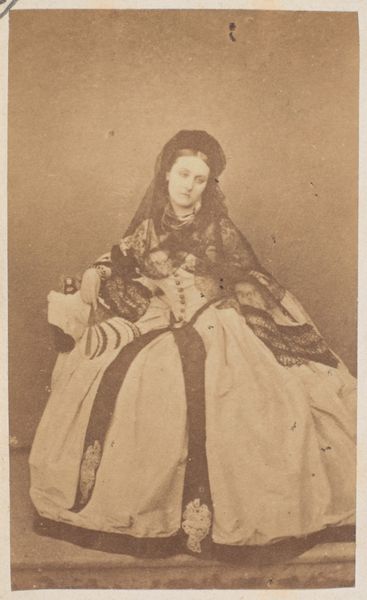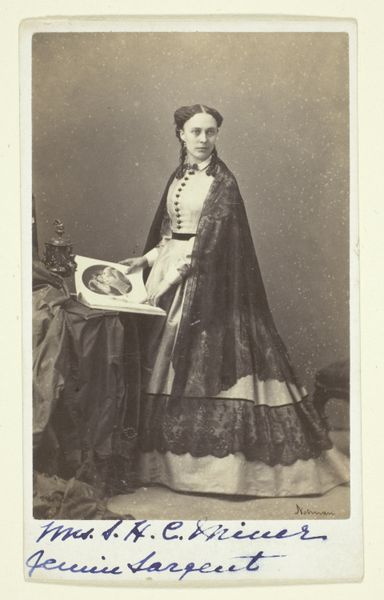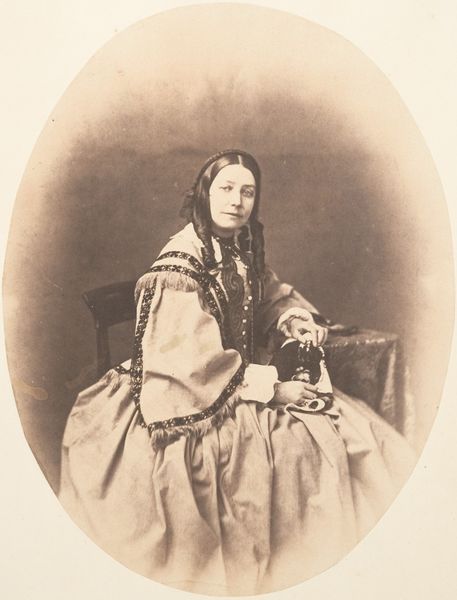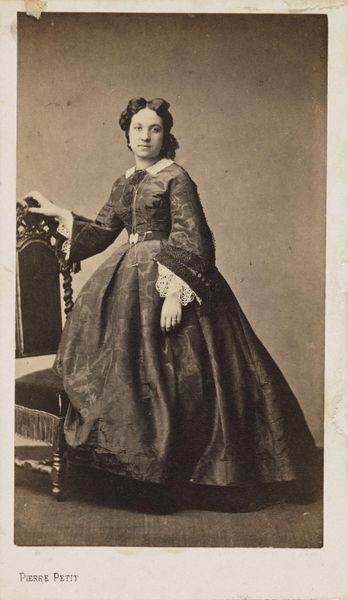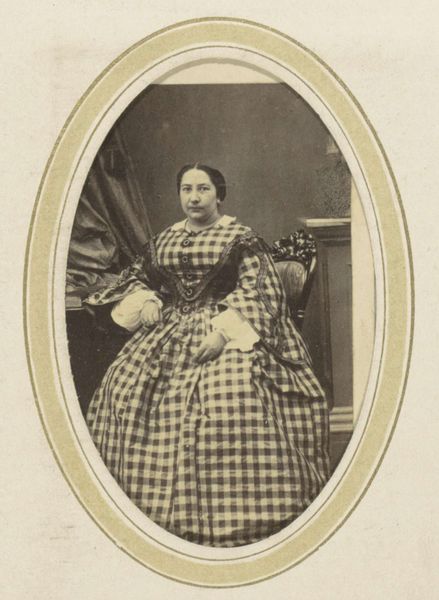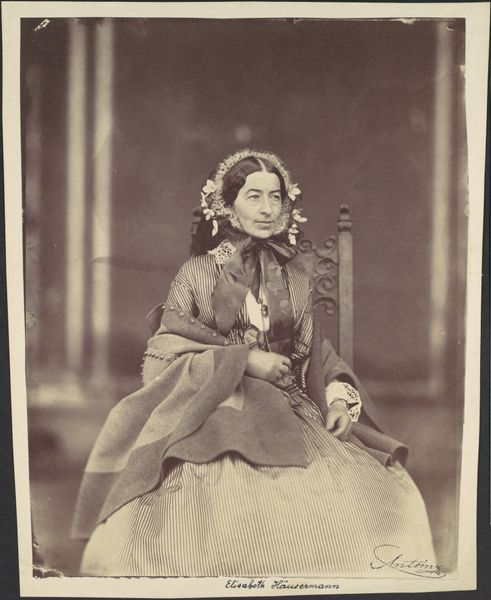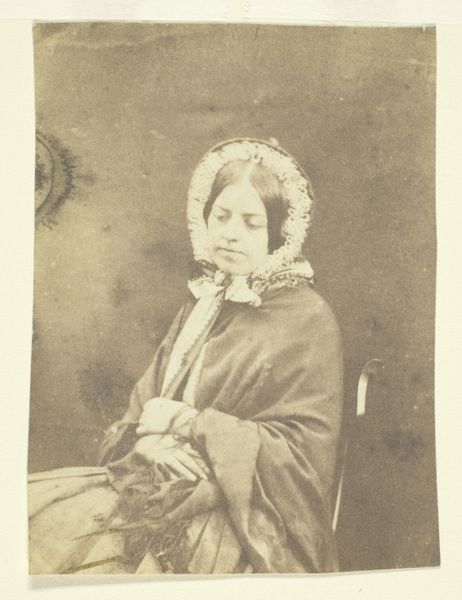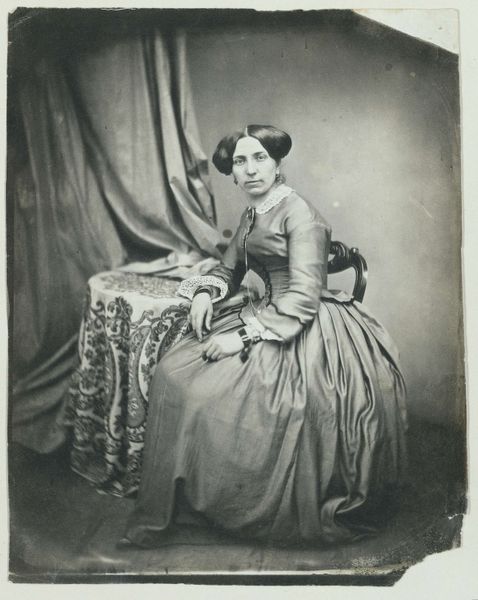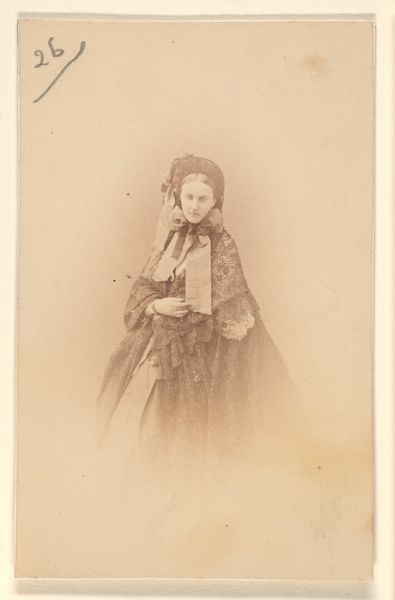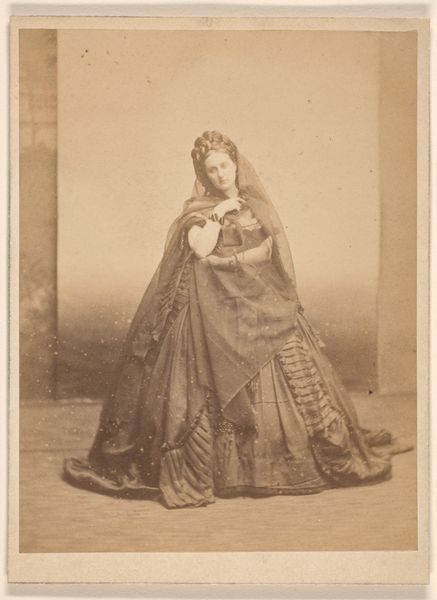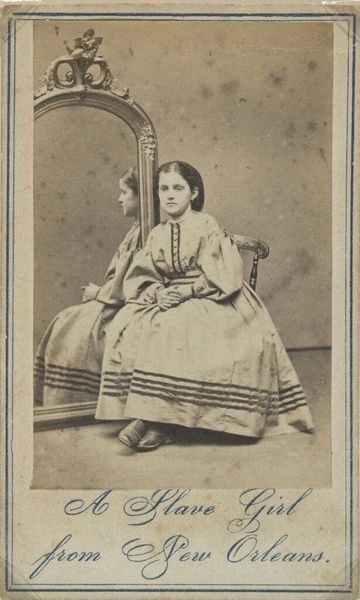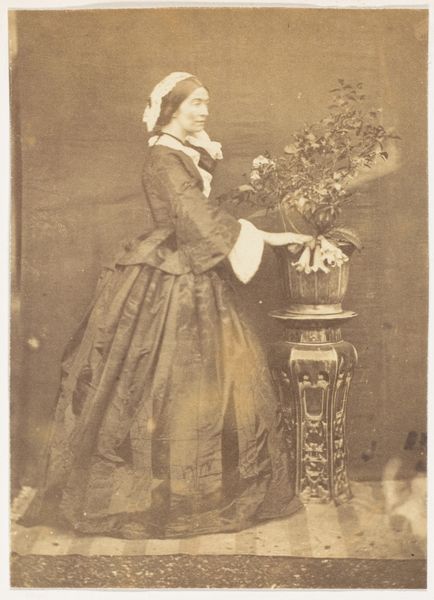
photography, gelatin-silver-print
#
portrait
#
photography
#
gelatin-silver-print
Dimensions: 16.6 x 12.9 cm (6 9/16 x 5 1/16 in.)
Copyright: Public Domain
Curator: This gelatin silver print, “Louise-Marie-Julie,” was captured by Louis-Adolphe Humbert de Molard around 1849, and it now resides here at The Metropolitan Museum of Art. Editor: The image is dominated by sepia tones. The dress, rendered in checkboard pattern, appears striking, creating strong contrast with the shadowy, blurry background, where it's difficult to define the setting. Her pose gives off an aura of vulnerability and grace. Curator: The formal pose certainly fits into the 19th century tradition of portraiture. While painting was more traditional at the time for portraits, it's also a period where the emerging technologies of photography made portraiture more widely accessible, shaping and democratizing image culture. Editor: The tonality itself strikes me as incredibly deliberate. It adds an emotional dimension to the photograph that transcends simple documentation. See how the light gently caresses the left side of her face? And the dress gives an amazing texture to the whole picture. It is quite an outstanding example of early photography in the use of shapes and light. Curator: It's true, the use of gelatin silver enhances those details. While more readily available, the chemical processes used to produce such prints remained highly technical and challenging, as the image sharpness itself attests. This new medium also posed the question: How does photography stand in relation to painting as an art form? Editor: I see in it an intentional artistic statement. De Molard’s strategic placement of light, the pattern of the clothing—everything is meticulously constructed to produce meaning. It invites the viewer to not just see the subject, but to actively interpret the aesthetic choices made in composing this portrait. Curator: A very salient point. Considering its historical context, it embodies a transformative moment in how people understood visual representation. We observe an individual negotiating tradition with innovation in their artistic practice, challenging and expanding definitions of art. Editor: Yes, analyzing how the artist makes use of tonal range is key to understanding it. A real gift to see and ponder the picture!
Comments
No comments
Be the first to comment and join the conversation on the ultimate creative platform.
